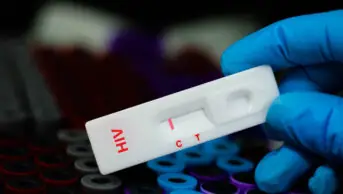
What is your current role and how did you get there?
I have over 10 years’ experience working in a variety of sectors including community, hospital and primary care and I am currently the lead pharmacist for the families, young persons and children’s services division within the Leicestershire Partnership Trust.
My role is desk based, overseeing all aspects of medicines within the division. Although this can be exciting and challenging, I have found myself moving away from clinical duties and patient contact. Making a difference to patients brings me a great deal of satisfaction so I wanted to do something that would bring me closer patient care. So I undertook a non-medical prescribing course.
How are you using your non-medical prescribing qualification?
I learnt that one of the services in our trust was struggling to give children with attention-deficit hyperactivity disorder (ADHD) follow-up appointments. This presented an opportunity to use my non-medical prescribing qualification and make a difference to patients’ lives while supporting a service within my division. However, the role was in a clinical specialism that I knew little about.
Did you need any other qualifications or training for this role?
To be competent in this role, I had to undertake continuing professional development, which included attending seminars, reading guidelines and drug information, shadowing a variety of professionals and getting to know what family support services were available locally. I also had to familiarise myself with the patient record system.
What does the role involve?
With the service manager and consultants, I arranged that I would run a clinic for 3–6 months for children with ADHD, as a pilot scheme. The scheme had to demonstrate the impact of my involvement and show improved outcomes for the patients and parents. We agreed that I would receive referrals from three named consultants. Patients referred to me would be stable with ADHD as their main issue, and in need of a routine review. I saw children or young people per clinic, spending one hour with each patient and completing documentation.
To balance my clinic work with my day job I initially agreed to undertake two half-day clinics per month with another half day dedicated to completing the associated paperwork. The clinics were timed so that I always had access to a consultant on site. I was allocated a clinic co-ordinator who would book patients for my clinic and provide other assistance. After each clinic I would feed back my findings, plans and actions to the consultant who referred the patient.
Once a month I discussed problems and interesting cases with a group of nurses who specialise in ADHD, autistic spectrum disorders (ASD) and child health.
What did the pilot scheme achieve?
One of the aims of the pilot was to ensure timely review of ADHD patients in a safe and appropriate manner. Within six months, there were no overdue follow-up appointments within the designated sites. Over the same period, I also undertook a patient satisfaction survey to find out how patients and parents felt about seeing me instead of a consultant. Across all categories, including “polite and considerate” and “explaining the risks of treatment”, over 95% of responses were “very good” or “extremely good”.
I was able to make use of my non-medical prescribing qualification and believe I made a difference to patients and their families. I also gained a better understanding of the challenges faced by front-line clinicians, which is a useful insight for my divisional lead role.
What do you hope to achieve in the future?
Because of the overall success of the pilot, the consultants and service manager agreed to make my clinics permanent and I increased my capacity to see five patients per slot. I would like to continue to gain expertise in ADHD as well as develop a better understanding of associated co-morbidities, including ASD, insomnia, oppositional defiance disorder and conduct disorder.
This will allow me to see more complex patients.

